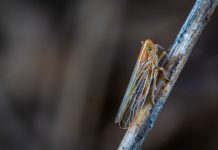-
Urushiol oil is the active ingredient in poison ivy and causes an itchy, blistery rash in 85 percent of people. You get the rash either by coming into direct contact with the plant or indirectly, for example by touching fabric or pet fur with oil on it.
-
Poison ivy does not cause an allergic reaction in animals besides humans—deer and muskrat actually eat it!
-
There are myths that eating small amounts of poison ivy will help build up an immunity to the plant—these are false. In 1987, a study on ingesting poison ivy was published in the Archives of Dermatology and reported this method did not work. However, the severe oral reactions of people who tried a bite were well documented.
-
It’s also a myth that scratching a poison ivy blister will spread the rash— the rash can only be spread by further contact with urushiol oil—but scratching could cause infection.
-
In The Coasters hit song “Poison Ivy,” covered by The Rolling Stones, Mick Jagger sings, “Well late at night when you’re sleeping, poison ivy comes a creeping all around. You’re gonna need an ocean of Calamine lotion, you’ll be scratching like a hound, the minute you start to mess around.” Metaphorically speaking, of course.
-
Poison ivy is found in every state except for Alaska, California and Hawaii, and in every Canadian province except for Newfoundland and Labrador.
-
DC Comics’ Dr. Pamela Lillian Isley is the most famous fictional character to adopt the name of this toxic plant. The super-villianess, eco-terrorist and enemy of Batman uses toxins from plants and her own bloodstream for crime and kills with a kiss. Most partners you shouldn’t be with typically just leave you with a nasty rash. See quote from Jagger, above.
-
Q:What do you get when you cross poison ivy with a four-leaf clover? A: A rash of good luck
This article first appeared in the Fall 2015 issue of Canoeroots Magazine.
Subscribe to Paddling Magazine and get 25 years of digital magazine archives including our legacy titles: Rapid, Adventure Kayak and Canoeroots.









